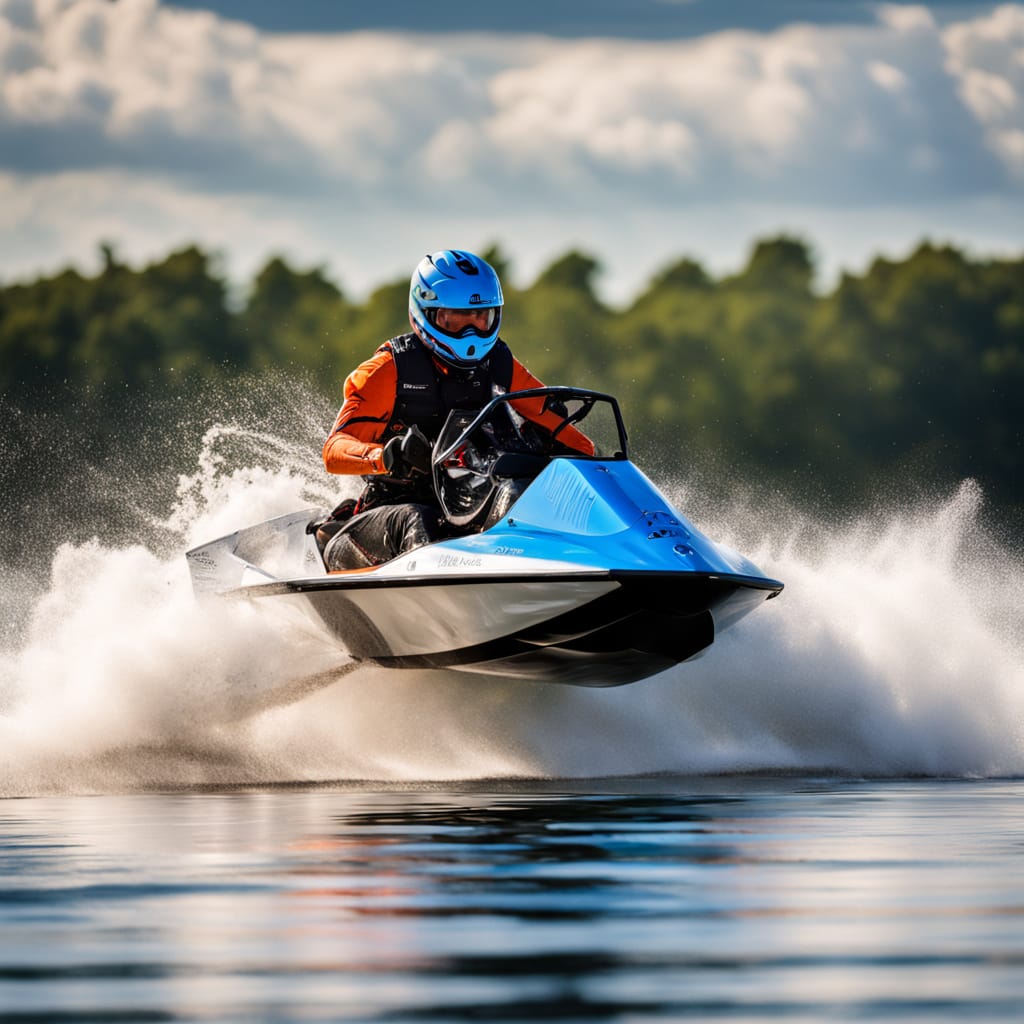Aquakart: A Thrilling Sport on Water

Aquakart is a unique and exhilarating water sport that has captured the interest of adventure lovers across the globe. It combines the thrill of go-kart racing with the dynamic challenges of water-based activities. Unlike traditional karting, where racers speed along on asphalt tracks, Aquakart racing takes place on water, giving it an entirely different level of excitement. As the popularity of this sport continues to grow, its global presence and following have expanded, bringing together fans, amateurs, and professionals from various regions. This blog will dive deep into the origin, history, rules, global popularity, and social significance of Aquakart, while also exploring how it is played by both amateurs and professionals.
The Origin and History of Aquakart
Aquakart is relatively new compared to traditional motorsports, but its roots can be traced back to innovations in watercraft technology in the 1990s. With the invention of compact and powerful personal watercraft (PWCs), manufacturers started looking for new ways to make use of these vehicles beyond leisure activities like jet skiing. The concept of racing on water using small, kart-like crafts was soon born. Engineers began designing lightweight, maneuverable watercrafts that could emulate the experience of go-karting on water.
The first organized Aquakart races were held in Europe in the early 2000s, especially in coastal areas where water sports were already popular. As technology improved, these races became more professionalized, with better safety measures and enhanced vehicle designs. Aquakart grew in popularity thanks to its blend of speed, strategy, and the unpredictability of racing on water surfaces.
In the last decade, Aquakart expanded beyond Europe and gained traction in other parts of the world. It began appearing in recreational parks, water sports events, and even on television, bringing the sport to a broader audience. As more countries embraced Aquakart, professional leagues emerged, transforming it from a niche water sport to a global phenomenon.
Global Popularity of Aquakart
Today, Aquakart has established itself as a thrilling and competitive sport across the globe. Its popularity has surged in countries with extensive coastlines or water-based sports cultures. Europe remains a central hub for Aquakart competitions, with countries like France, Spain, and Italy leading the way in organizing regular events and hosting professional leagues. Many of these races take place in coastal towns where the conditions for water sports are ideal.
In the Middle East, the sport has also gained prominence. Countries such as the United Arab Emirates and Qatar have invested heavily in water sports infrastructure, making Aquakart a popular attraction. With calm and warm waters, these regions are ideal for hosting international competitions and attracting a wide array of spectators. Dubai, in particular, has become a hotspot for Aquakart enthusiasts, with annual races drawing competitors from across the globe.
Asia has also joined the Aquakart movement, especially in countries like Thailand and Malaysia, where the tourism industry has integrated the sport into beach resorts and adventure parks. Here, Aquakart has found a loyal following among both tourists and locals who are eager to experience a new kind of water sport.
In the Americas, Aquakart is growing at a steady pace. Coastal cities in the United States, especially in states like Florida and California, have embraced the sport due to their well-established beach and water sports cultures. South America, too, has begun organizing more races, particularly in Brazil and Argentina, where watersports have always been a major attraction.
The global spread of Aquakart can be attributed to the sport’s unique appeal. It combines the speed and thrill of motorsports with the refreshing environment of water racing. The accessibility of the sport—where anyone with basic watercraft handling skills can participate—has helped to democratize it. With the rise of social media and international sports channels, Aquakart continues to attract new fans worldwide.
Amateur Aquakart: Youth and Schools
While Aquakart has made waves in professional leagues, its appeal to amateur enthusiasts is undeniable. Across the world, recreational clubs and water sports parks have introduced amateur Aquakart racing as a fun and accessible activity. Participants from all age groups, including youth and school-aged children, can get involved in the sport without needing professional-level skills or equipment.
In many countries, schools have started offering Aquakart as part of their physical education or after-school sports programs. Youth leagues have popped up in regions with access to safe water bodies, where kids and teenagers can learn the fundamentals of watercraft racing. The sport helps foster a sense of teamwork, competitiveness, and responsibility as young racers are taught how to operate the watercraft safely and ethically.
Many recreational Aquakart clubs offer training programs for beginners. These programs often focus on teaching the basics of watercraft control, maneuvering through obstacles, and understanding water currents. Youth leagues, in particular, have become popular in countries with active water sports cultures. In some European nations, Aquakart camps for children and teenagers are organized during the summer months, where participants spend weeks learning and improving their racing skills.
Aquakart is not limited to coastal areas. Thanks to advances in portable watercraft technology, artificial water bodies, lakes, and rivers are now used as racetracks for both amateur and professional events. This has allowed landlocked countries or cities to embrace the sport. In such places, Aquakart can be played in water parks or large swimming pools designed specifically for this purpose. These artificial tracks provide a controlled environment where beginners can safely enjoy the sport.
Professional Leagues and Competitions
Aquakart has grown from a recreational activity into a professional sport with organized leagues, especially in regions like Europe and the Middle East. The rise of professional Aquakart leagues has introduced a new layer of competitiveness and professionalism to the sport. These leagues are divided into categories based on skill levels, engine power, and watercraft designs, allowing racers to compete on an even playing field.
In Europe, the International Aquakart Federation (IAKF) plays a key role in organizing and regulating the sport. The IAKF hosts annual championship events where the best racers from different countries compete for the title of world champion. These races often take place in scenic coastal locations, drawing large crowds of spectators and creating a festive atmosphere around the events.
The Middle East also has a strong professional Aquakart presence. The Dubai Aquakart League (DAL) is one of the most prestigious competitions in the region. With high-tech watercrafts and world-class facilities, the DAL has attracted top talent from around the world. Racers from countries like the UAE, Saudi Arabia, and Bahrain compete in these events, which are often televised and sponsored by major brands.
Asia is not far behind in terms of professional leagues. Countries like Japan and Thailand have started organizing regional and national competitions that attract local talent. These events are typically held at popular tourist destinations, providing entertainment for visitors while promoting the sport to a wider audience.
In addition to national leagues, Aquakart competitions often take place at international sports festivals and water sports events. The sport has become a popular fixture at festivals like the Monaco WaterSports Festival, where professionals showcase their skills in front of an international audience.
The Social and Political Significance of Aquakart
Aquakart’s growing global presence has also given it social and political significance. On a social level, the sport has played a role in promoting inclusivity and gender equality. Unlike some traditional motorsports, Aquakart is equally accessible to both men and women. Women racers have become increasingly visible in the sport, with many professional leagues now featuring co-ed competitions. This has helped break down gender barriers in the world of competitive racing.
Moreover, Aquakart has become a tool for promoting water safety and environmental awareness. Many leagues and clubs incorporate educational programs that teach participants about the importance of preserving water bodies and maintaining eco-friendly practices. Some leagues also partner with environmental organizations to promote clean water initiatives, further highlighting the sport’s role in raising awareness about environmental issues.
Politically, Aquakart has been used as a way to foster international cooperation. Cross-border competitions and international events often serve as opportunities for nations to come together and collaborate. In some cases, these events have helped strengthen diplomatic ties, particularly in regions where water sports are an integral part of the culture.
Aquakart has also been embraced by governments and tourism boards as a way to boost local economies. By hosting international competitions and festivals, cities can attract tourists, generate revenue, and promote their local culture. This is particularly true in coastal cities or resort towns, where Aquakart events are used to draw visitors during the peak tourist seasons.
The Rules of Aquakart
Aquakart may share similarities with traditional go-karting, but its rules are tailored to the unique challenges of racing on water. Here are the basic rules that govern the sport:
- Watercraft Specifications: Participants must use an approved watercraft designed for Aquakart racing. These watercrafts are smaller and more agile than traditional personal watercrafts, allowing for better maneuverability during races.
- Course Design: Races take place on designated water tracks that are marked with buoys. The courses often include sharp turns, obstacles, and straightaways that test the skill of the racers.
- Start and Finish: Similar to motorsports, Aquakart races begin with a starting signal, usually a flag or a horn. Racers must complete a set number of laps to finish the race. The first racer to cross the finish line wins.
- Safety Gear: All participants must wear approved safety gear, including life jackets, helmets, and, in some cases, protective suits. This ensures that racers are protected in case of collisions or capsizing.
- Penalties: Racers can incur penalties for breaking rules such as cutting corners, colliding with other racers, or ignoring safety protocols. Penalties often result in time deductions or disqualification.
- Weather Conditions: Since Aquakart races are held on water, weather conditions play a crucial role. Races may be postponed or canceled if conditions are deemed unsafe, such as high winds, strong currents, or heavy rain.
- Fuel and Maintenance: Watercrafts must adhere to specific fuel regulations to ensure a level playing field. Racers are also responsible for maintaining their vehicles in good working order throughout the competition.
The dynamic nature of water racing means that no two Aquakart races are the same. Racers must constantly adapt to changing water conditions, wind speeds, and the strategies of their competitors. This unpredictability adds an extra layer of excitement to the sport, making it a favorite among thrill-seekers.
Conclusion
Aquakart is more than just a sport. It’s an adventure that combines speed, strategy, and the natural beauty of water racing. From its humble origins in Europe to its rise as a global sport, Aquakart has captured the imagination of both amateur enthusiasts and professional racers. With a growing number of leagues, competitions, and youth programs, the future of Aquakart looks bright. The sport has already made a significant impact socially, politically, and environmentally. It continues to evolve, shaping a new generation of water sports fans and participants.
Whether you’re a casual fan or an aspiring racer, Aquakart offers something for everyone. Its unique blend of fun, challenge, and skill ensures that it will remain a beloved sport for years to come.





